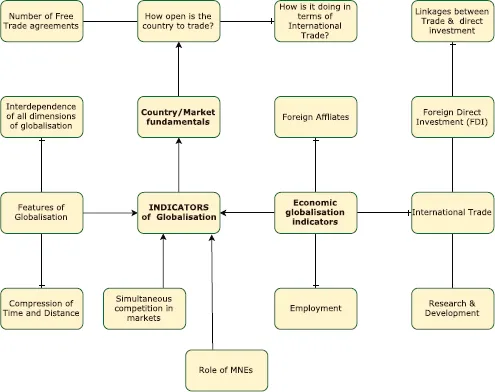![]()
Part A
The Global Marketing Management System
![]()
Introduction
To realize that you do not understand is a virtue; not to realize that you do not understand is a defect
— Lao Tzu
Imagine that you could build a time machine and go back in time to look at the world of trade and international business. If one were to go back a mere three decades, you would see that transport and communication were key barriers to international trade. The division of the world into political blocs had created distinctive spheres of economic activity, some of which were artificially constrained by state managed enterprises and others by what we now call “free trade”. Drastic decrease in the cost of transport and communication brought about by the increasing use of technology as well as geopolitical changes have dramatically increased the volume of international trade to over a 7% increase every year since 1970.a From 1980 onwards, developing economies increased their share of international trade to almost 42% of global trade with Asia emerging as a fulcrum of these so-called “emerging markets”.
We attribute this drastic economic growth to an economic phenomenon called Globalization — the interconnectedness of markets, states, culture, products, and innovation into a constant moment of goods and services across the globe. Globalization is not a recent phenomenon having been around for centuries, with the colonization of different parts of the world by early hunting tribes, to the formation of societies leading onto the creation of nations. With the advent of new agriculture techniques, production and distribution networks were developed that help transfer food surpluses. The easier movement of trade across borders, declining communication and logistic costs, and the rise of new technologies, has allowed anyone, anywhere to become consumers of global goods and services. We call this integration “globalization” and this has been responsible for the fast rise in global trade. The academic debate around this has been divided with some arguing that globalization has been positive and others focusing on the negative consequences of globalization. Perhaps, the world is not connected as it seems as we see in the argument by Pankak Ghemwat
1 . Another aspect of globalization has been freeing or liberalization of trade within the political debate that has divided academic theory on how best markets can be liberalized in order to balance the interests of local and non-local actors and institutions
b.
Figure 1: Significant UK Trade partners.
Source: ONS.
All of these phenomena rely on the world of International Business to facilitate the movement of these goods and services seamlessly and efficiently across national borders. But international business is an all-encompassing term that has for the most been dependent on the response of organizations to shifts within the global economy. The rise of the emerging markets as a powerful competitor to many developed economies with an attendant shift in the political landscape has thrown in newer dimensions of global competition for many firms. In the global economy, transnational companies rely on both developing and developed countries to successfully complete their ultimate goal: that of maximizing profits while minimizing costs.c
The nature of consumer behavior is constantly changing and firms need to constantly adapt and serve new segments in new geographies. Firms want to locate in large markets, close to customers, to reduce trade costs.d The nature of doing business is changing in a dynamic global environment and firms entering new markets often have to manage different challenges. The case of Coca-Cola facing challenges in the Iranian market is a key example of this dynamism and can be seen in the case study by Koc & Koc (2014).e Coca-Cola has faced challenges that range from geopolitical issues to religious and social cultural attitudes of drinking soft drinks.
Figure 2: The Indicators of Globalization
For the business analyst quiz looking at expanding a product or service into new market, the attendant attributes of globalization, specifically the economic indicators of globalization,2 are a useful tool to understand the impacts of globalization.
In 2016, global trade dynamics are markedly different from those in the past. The rise of new political actors specifically from emerging markets, the multipolar geopolitical power structures and disruptive technologies have impacted on the world of ...



